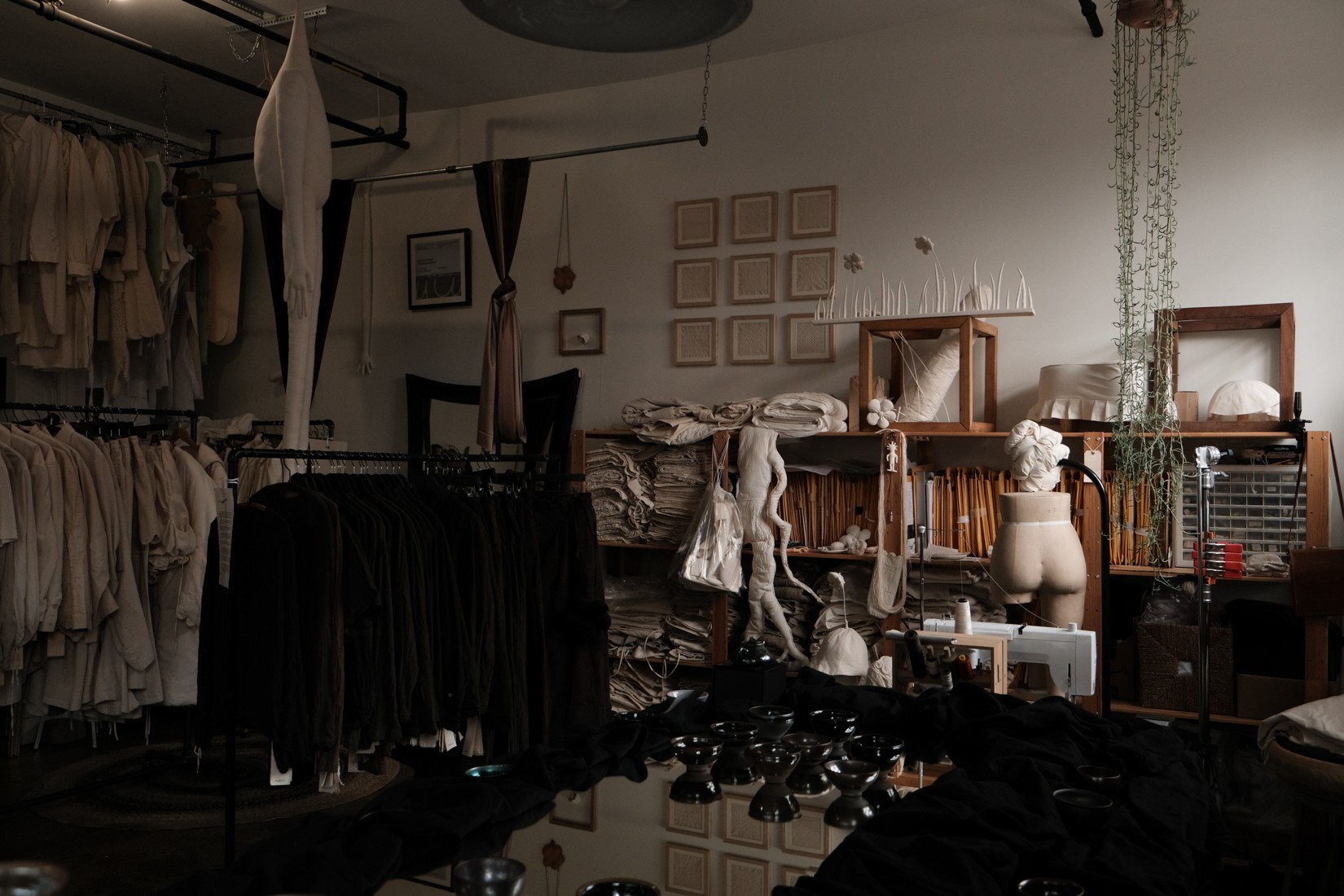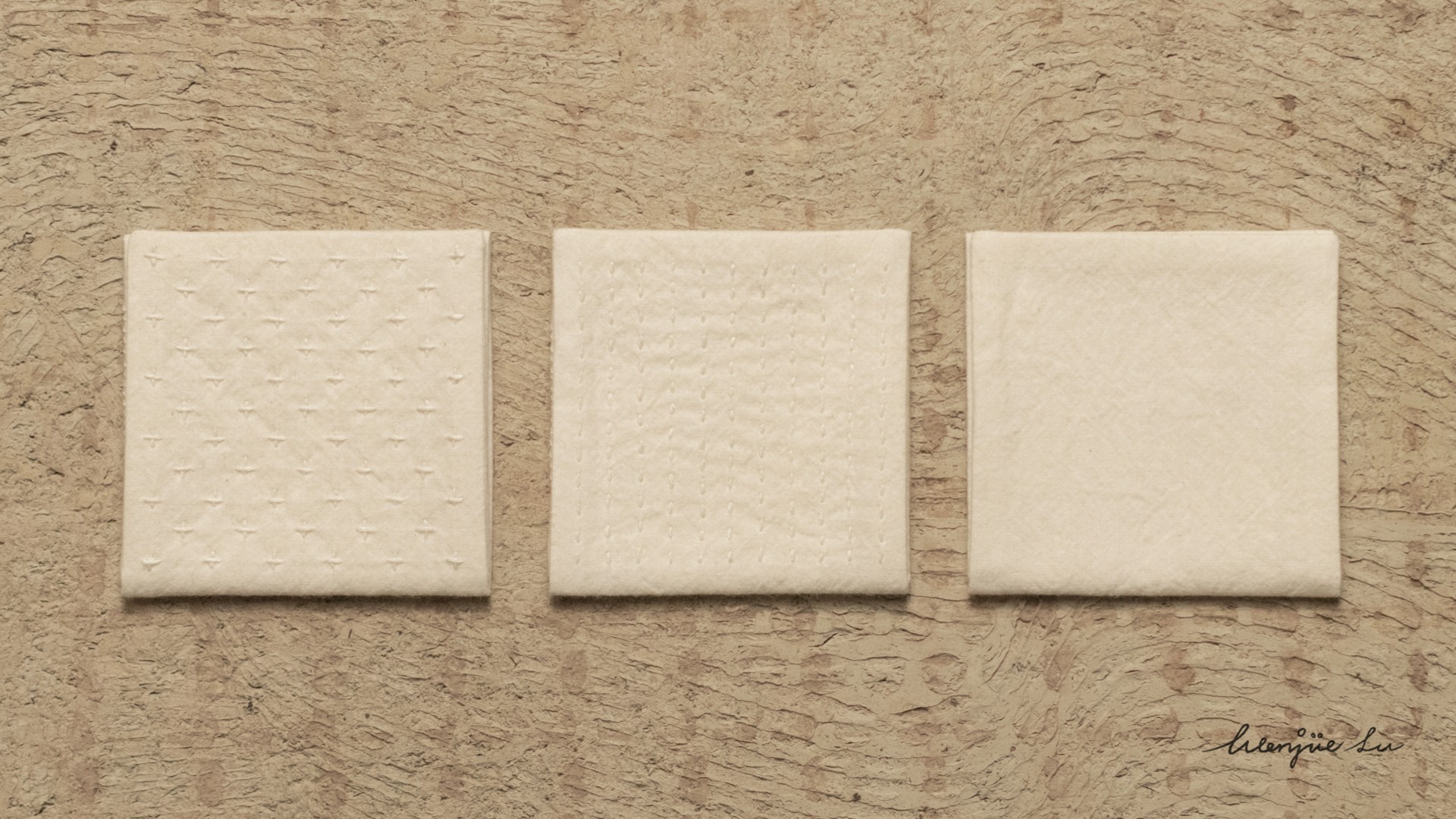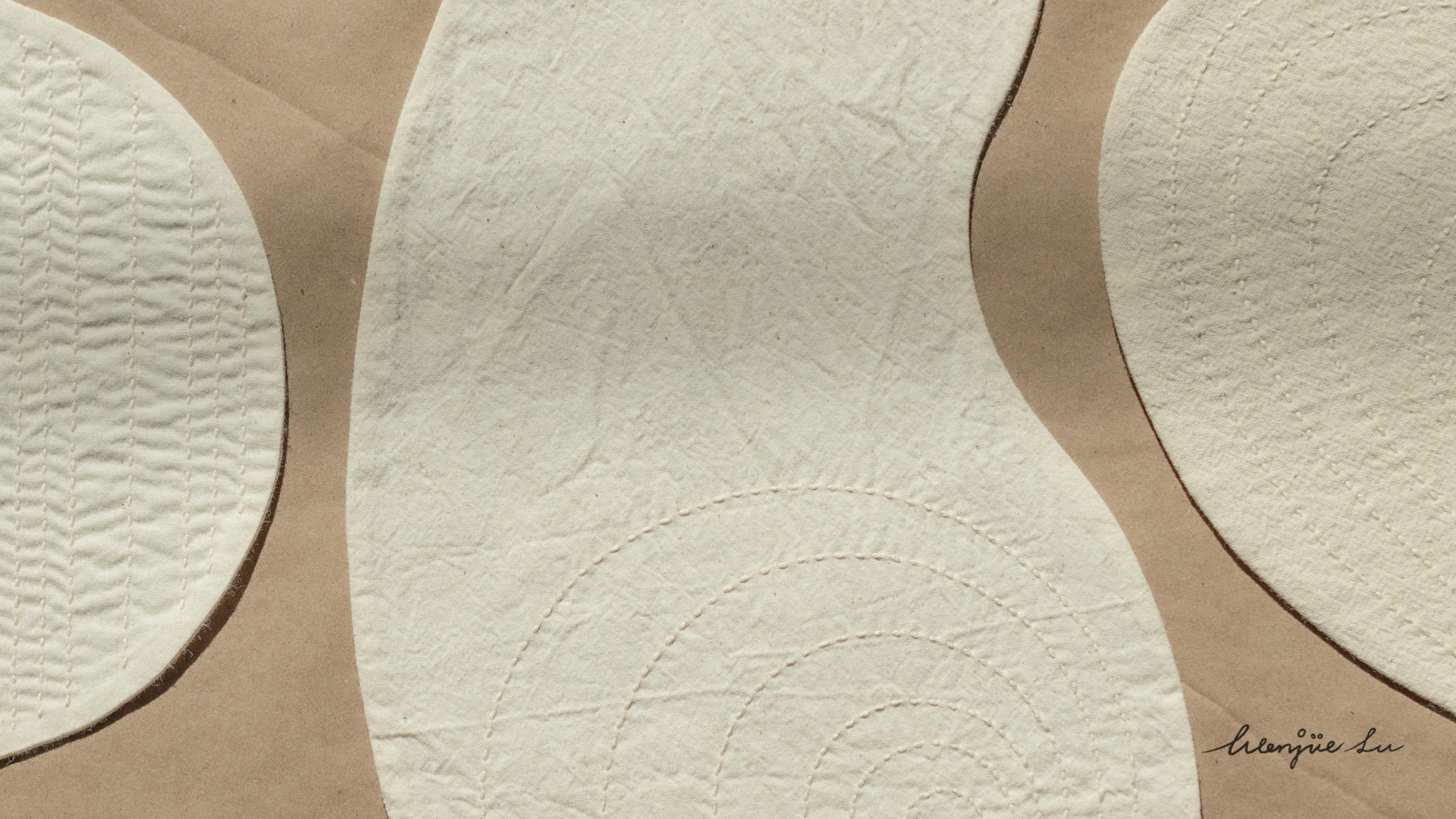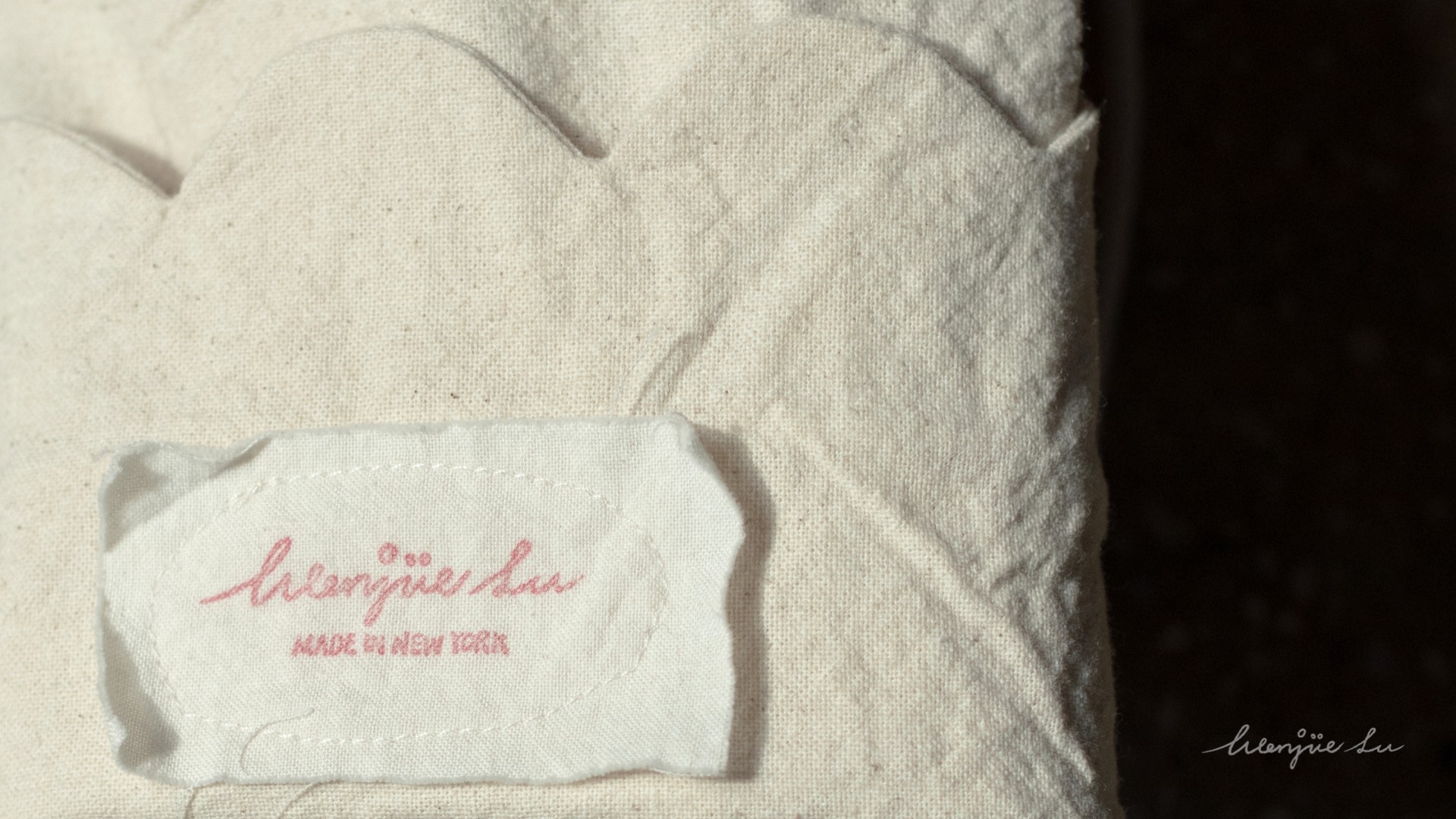We recently connected with Wenjue Lu and have shared our conversation below.
Wenjue, thanks for joining us, excited to have you contributing your stories and insights. Coming up with the idea is so exciting, but then comes the hard part – executing. Too often the media ignores the execution part and goes from idea to success, skipping over the nitty, gritty details of executing in the early days. We think that’s a disservice both to the entrepreneurs who built something amazing as well as the public who isn’t getting a realistic picture of what it takes to succeed. So, we’d really appreciate if you could open up about your execution story – how did you go from idea to execution?
When I first had the idea to start Studio Wenjüe Lu, I didn’t see it simply as a business venture but as a vessel for a larger conversation—one that ties together art, tradition, and the human experience across time and cultures. In a way, it all began with my fascination with folk art forms, particularly Sashiko, a traditional Japanese hand-stitching technique that evolved from necessity to artistry over centuries. Sashiko originated during the Edo period in northern Japan, where women used it to mend garments for men during harsh winters. What struck me was that this practice wasn’t isolated—across the globe, in countless cultures, people discovered the same thing: the act of mending, patching, and extending the life of fabrics. It’s a human instinct, something deeply woven into our shared history. It made me realize that, despite differences in race or ethnicity, there is a universality in how we relate to the materials around us and in our efforts to preserve them.
That was the seed for the studio—this idea that, just like the act of mending fabric, we can mend our relationship with clothing, with each other, and with the planet. So the Lifelong Mending Initiative came to be a central pillar of Studio Wenjüe Lu. It promises to continue the life of every piece we create, for as long as the customer desires. It’s about encouraging people to cherish, wear, and transform a garment, infusing it with memories over time, much like how Sashiko stitches became an aesthetic art form from its humble beginnings as a tool for survival.
In the early days of launching the studio, the vision was clear: to create with purpose, using only natural fibers and upcycled fabrics. But moving from vision to reality required patience and a lot of learning. I had to start by sourcing ethically produced materials that aligned with the studio’s values, which was harder than I thought, especially while ensuring that the quality of the garments matched the artistic vision. I was also deeply inspired by the idea of ‘slowness,’ a core part of our studio’s ethos. We wanted to resist the fast-paced, trend-driven fashion industry and focus on creating timeless, handcrafted pieces that could evolve with the wearer.
Building the Lifelong Mending Initiative took time. We didn’t just want to make garments; we wanted to offer a lifelong connection to them. I needed to set up a system where customers could easily send back worn garments for mending. This took careful planning—finding the right artisans, learning how to communicate the importance of repair to our community, and making sure we had the infrastructure in place to handle this unique relationship between creator, garment, and customer.
Every step, from concept to execution, was driven by a need to stay true to this multi-layered identity. As an artist, designer, and business owner, it was important for me to create something that wasn’t just about producing clothes but about embodying a philosophy of care, sustainability, and interconnectedness. I think what helped me most was remembering that launching the studio wasn’t about getting it perfect right away; it was about staying true to our ethos and making each decision intentionally, rooted in a deep respect for both tradition and the future.

Wenjue, love having you share your insights with us. Before we ask you more questions, maybe you can take a moment to introduce yourself to our readers who might have missed our earlier conversations?
My name is Wenjue Lu, and I’m the co-founder of Studio Wenjüe Lu alongside Chufeng Fang. I’m an artist, designer, and creative entrepreneur born in China and now based in Brooklyn. Our studio stands at the intersection of art, design, and fashion, but we don’t see ourselves confined to any one category. We explore a wide range of creative mediums, from soft sculptures to garments, each piece driven by a philosophical inquiry and a commitment to sustainability. One of our core principles is the concept of “slowness” — we reject the fast-paced, disposable nature of the fashion industry and instead focus on creating timeless pieces that resonate with a deeper sense of meaning and purpose.
What sets us apart is our Lifelong Mending Initiative, which is based on the idea that each of our pieces is a companion for life. We use only natural fibers and upcycled materials, and we promise to repair and transform any of our pieces for as long as the wearer wants. This approach draws heavily on traditional folk art techniques, especially Sashiko, the Japanese hand-stitching technique that evolved from necessity to artistry. I am passionate about exploring the universality of human experience, and Sashiko speaks to that. It’s a craft rooted in mending and care, and I see parallels across different cultures where similar practices have emerged. Through this initiative, we hope to shift the mindset around clothing — from something disposable to something cherished and constantly evolving.
I’m incredibly proud of the fact that our studio is built on a philosophy that merges sustainability with artistry. We don’t follow trends; instead, we create what we call “Eternal-wear” — garments and art that transcend seasons and fads. What I want people to know about our work is that it’s not just about making clothes or sculptures — it’s about fostering a deeper connection between people and the things they wear and surround themselves with. We aim to create pieces that carry emotional and personal meaning, and that become more valuable over time through the memories and experiences they hold.
At Studio Wenjüe Lu, we take pride in going beyond the transactional nature of fashion. We offer a service that allows people to be a part of the creative process through our mending initiative, and we bring forward a slower, more thoughtful way of engaging with clothing and art. What drives us is the belief that our creations should have lasting impact, not just aesthetically but emotionally and environmentally as well.

What do you think helped you build your reputation within your market?
I believe what helped build our reputation within the market is a combination of authenticity, a clear philosophy, and a commitment to meaningful, sustainable practices. At Studio Wenjüe Lu, we’ve never tried to chase trends or conform to the fast-moving cycle of the fashion industry. Instead, we’ve remained true to our core values of slowness, sustainability, and artistic integrity. Our approach to creating garments and sculptures is deeply rooted in traditional folk art techniques, particularly Sashiko, which inherently carries a sense of care, craft, and longevity.
Additionally, we’ve been fortunate to have our work featured in respected publications like Vogue and The New York Times, which have recognized our unique approach to fashion as an art form. The performance presentation of our “Neither” collection at New York Fashion Week last year garnered a lot of attention due to its unconventional format and the way it blurred the lines between fashion, art, and philosophy.
What’s really helped us build our reputation is that we’re offering something different in a market often saturated with sameness. Our emphasis on thoughtful design, craftsmanship, and sustainability resonates with people who are looking for more than just a product — they’re looking for meaning, connection, and an alternative to the fleeting, disposable culture of today.

Are there any books, videos or other content that you feel have meaningfully impacted your thinking?
Absolutely. Two key works that have profoundly influenced my thinking and overall philosophy are “Leaves of Grass” by Walt Whitman and “Tao Te Ching” by Laozi.
Whitman’s “Leaves of Grass” has been a constant source of inspiration. His poetic celebration of the individual and collective human experience resonates deeply with the core values at Studio Wenjüe Lu. Whitman’s embrace of nature, interconnectedness, and the idea that every individual contains multitudes speaks to our philosophy of “wholeness” — that every garment, every piece we create, contains layers of stories and meanings. His poetry encourages me to approach our work as something fluid and evolving, much like life itself. It’s a reminder that beauty can be found in the simplest details, and that every moment and connection can inspire something new.
On the other hand, Laozi’s “Tao Te Ching” has been fundamental in shaping my approach to both leadership and the creative process. The concept of wu wei (无为) — effortless action or “doing without doing” — has informed my understanding of how to lead a team and a business. It’s about finding balance, letting things take their natural course, and not forcing outcomes. This Taoist principle has helped me foster a studio environment that values patience, flow, and intuition. It also ties into our sustainable practices; rather than pushing against nature, we work with it, respecting the materials we use and the natural processes they undergo.
Contact Info:
- Website: https://wenjuelu.com
- Instagram: @wenjuelu



Image Credits
Studio View by @yuhsiangfu


